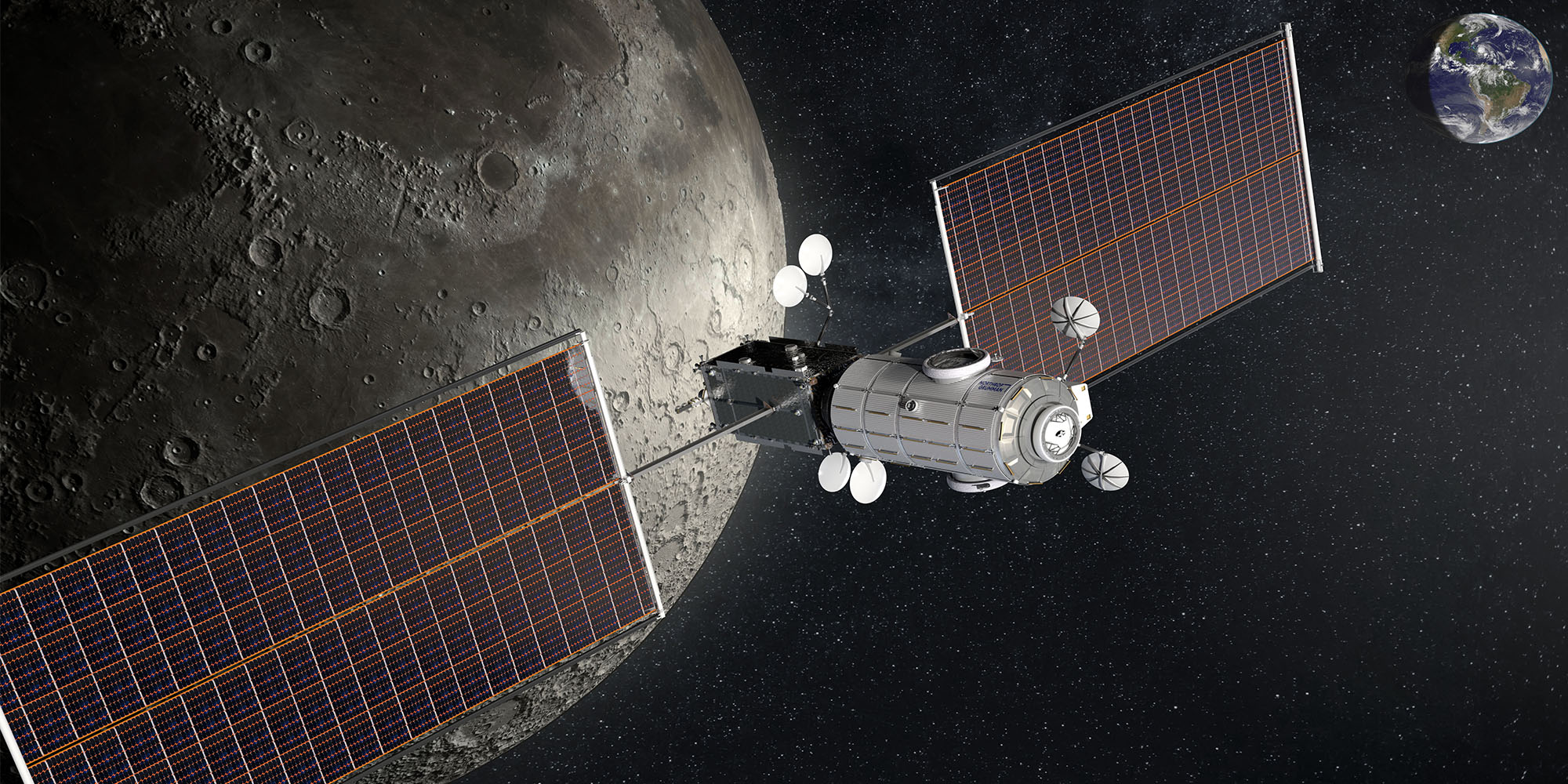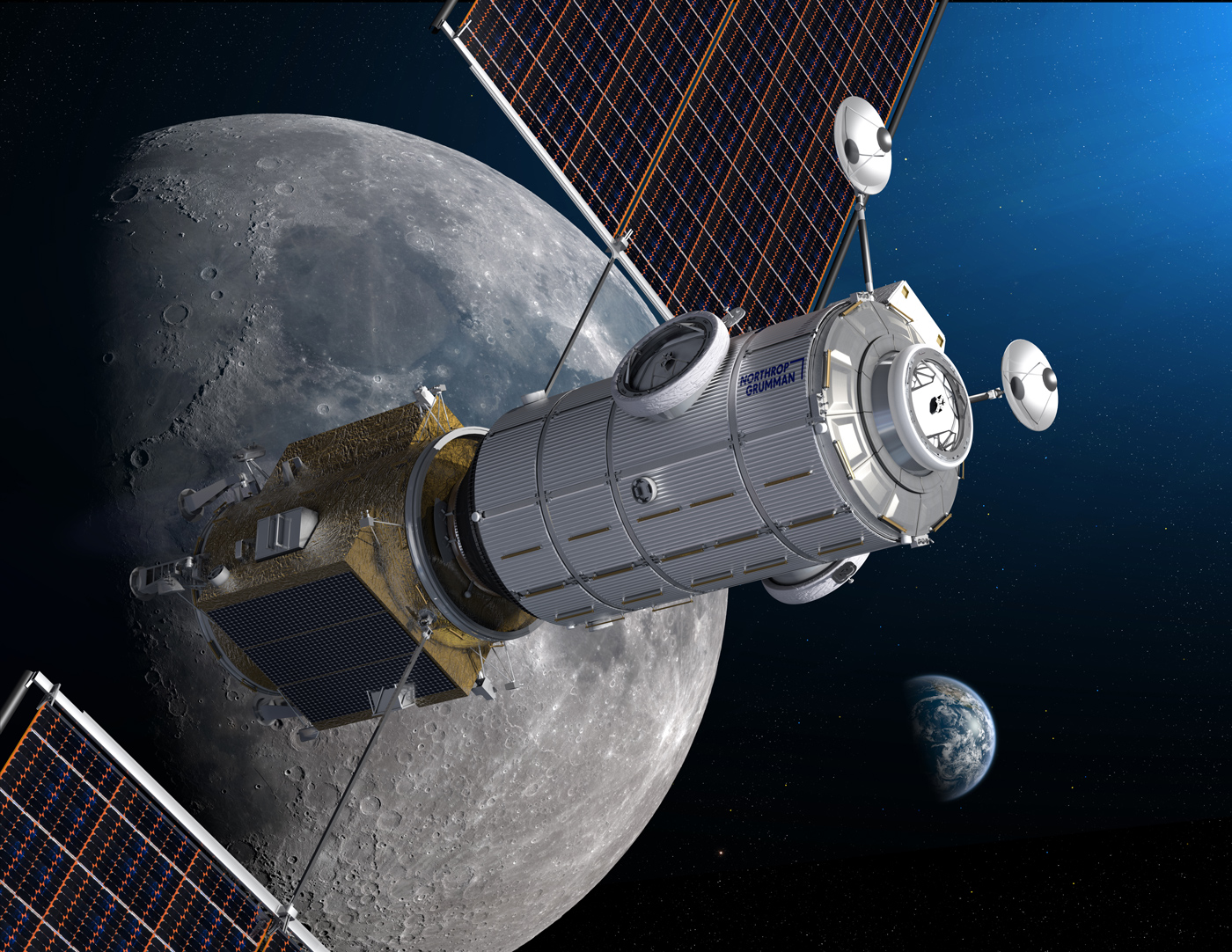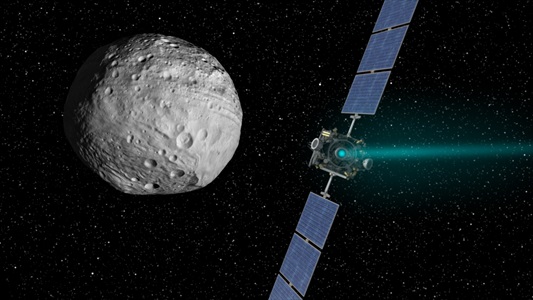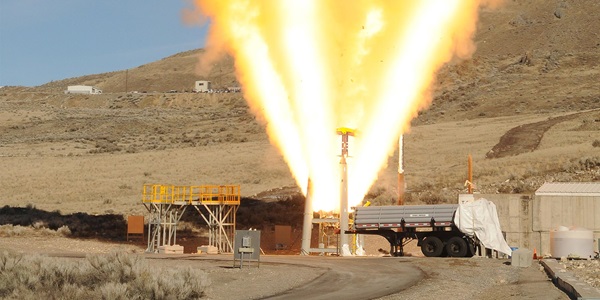Digital Engineering and Human Factors: Designing HALO

By Kelly McSweeney
Engineers are using digital engineering methods to design and test the Habitation and Logistics Outpost (HALO). HALO is the first pressurized module for NASA’s Gateway, an outpost that will orbit the moon and provide a temporary home and workplace for astronauts.
"It's really fun and exciting to be on the cusp of the next step for NASA and for the nation," says Paul Escalera, Lead Systems Engineer on the HALO program.
As a systems engineer, Escalera's job is to ensure the various HALO engineering disciplines within the program come together to ensure the module meets all of NASA's requirements.

What Is HALO?
The crew will launch from Earth in the Orion spacecraft, which will travel through space and then dock to the Gateway. HALO will have basic functions to allow early mission capabilities to provide astronauts with a safe environment, like a camp they can use as home base when they go back to the moon.
Within HALO, there are accommodations for storing food, tools and experiments, as well as space for astronauts to exercise and even sleep.
"There is a crew area that includes accommodations for a laptop and human interface panel where astronauts can do things like bring up the health of the system or turn off the lights. We also provide a livable environment for the crew, including air to breathe," Escalera says.
Since space is a vacuum, Northrop Grumman is providing a comfortable and healthy atmosphere for astronauts by ensuring air will be sustained at certain humidity levels while maintaining the proper ratios of oxygen and other gases and filtering the air in the module to remove contaminants.
"On a typical mission," Escalera explains, "the crew would live and operate within HALO, and then they can get into the lunar lander to depart the Gateway. Then, they land on the lunar surface and perform operations there. When they're done, they return to the Gateway, dock with HALO, clean themselves from all that lunar dust, package up their lunar samples, and then get into the Orion spacecraft and come back to Earth."
Digital Engineering and Human Factors
To mimic the lunar environment, Northrop Grumman engineers on the predecessor program to HALO — NextStep-2 — adopted digital engineering tools to help inform the design. For example, they used 3D printing to build mock-ups and virtual reality to test-drive the design. In this case, they need to both ensure the design works on its own and account for human factors in engineering, since this will be a crewed module.
When you add people to anything, things get a lot more complex. And that's where the fun comes in.
Human factors is a broad subject that can include everything from making sure signs are readable to ensuring the crew can reach light switches and hear smoke alarms. It also includes making sure that if an astronaut presses a button twice instead of once, the system won't accidentally reboot.
Digital engineering tools were especially important in a virtual environment. As Escalera explains, "We had to get creative on how to use these tools while getting input from retired astronaut crews and incoming astronaut crews — so we can stay ahead of the design and make sure we're incorporating design features they need to live and work in space on HALO."
Space Exploration Informs Our World
The technology that is developed for space travel eventually informs our everyday lives. Escalera explains that advanced materials and the miniaturization of electronics, for example, were pioneered on space programs.
"The innovation is one of the biggest benefits of space exploration," he says. "And when you learn about other places, like the moon and Mars, you come to really appreciate the planet we live on today, how unique it is and the diversity of life on it. It's just incredible."


